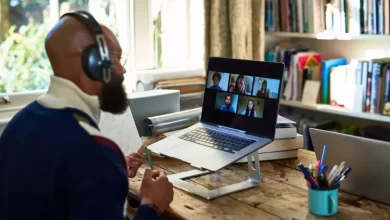How has working from home made workspace management rated?

With the Covid-19 pandemic and social distancing, many companies have had to resort to teleworking. More than two years after the first confinement, these remote working habits have disrupted traditional spaces. After having known the home office sometimes 100%, employees aspire to another organization. What are the changes to business premises?
Business premises remain essential
While some companies have completely given up on having offices, for the majority of them, these premises remain essential. Because despite the development of many communication tools, the office remains the best place to create social ties. A WhatsApp conversation will never replace an informal chat over coffee. These premises also allow a more fluid flow of ideas between employees, especially during face-to-face meetings.
The fight against isolation is also one of the challenges of tomorrow’s telework. Because some employees have found themselves overwhelmed by stress or have experienced a drop in motivation due to the absence of colleagues and social interactions.
Nevertheless, this office must reinvent itself. Health security and the anticipation of a new pandemic will now guide the layout of workspaces. Companies will have to imagine furniture that can be easily moved to increase the distance between employees or create smaller work groups. Attendance will also have to be reviewed with fewer workers on site at the same time.
With the Covid-19 pandemic and social distancing, many companies have had to resort to teleworking. More than two years after the first confinement, these remote working habits have disrupted traditional spaces. After having known the home office sometimes 100%, employees aspire to another organization. What are the changes to business premises?
Business premises remain essential
While some companies have completely given up on having offices, for the majority of them, these premises remain essential. Because despite the development of many communication tools, the office remains the best place to create social ties. A WhatsApp conversation will never replace an informal chat over coffee. These premises also allow a more fluid flow of ideas between employees, especially during face-to-face meetings.
The fight against isolation is also one of the challenges of tomorrow’s telework. Because some employees have found themselves overwhelmed by stress or have experienced a drop in motivation due to the absence of colleagues and social interactions.
Nevertheless, this office must reinvent itself. Health security and the anticipation of a new pandemic will now guide the layout of workspaces. Companies will have to imagine furniture that can be easily moved to increase the distance between employees or create smaller work groups. Attendance will also have to be reviewed with fewer workers on site at the same time.
Developments adapted to new needs
In addition to health standards, company premises must evolve to adapt to the new needs of employees. Since the hybrid rhythm between telework and face-to-face seems to have become the norm, appropriate equipment is necessary. While most offices were previously organized in open spaces with some closed offices and meeting rooms, workspaces will be more diversified. Companies can, for example, equip themselves with “phone rooms” designed for meetings by telephone, or even “huddle rooms” for meetings by video, but also more private and quieter spaces, conducive to concentration.
According to the European Investment Bank’s (EIB)* third climate survey 2020-2021, the pandemic has confirmed people’s ecological awareness. Employees therefore want a more respectful working environment with durable materials, good air circulation, thermal and acoustic comfort, and greener places.
And for the times when employees are going to work remotely, employers will have to invest in high-performance digital tools in different areas:
- for communication, which remains a foundation for the well-being of employees;
- for productivity;
- to facilitate the management of projects and the follow-up of everyone’s tasks;
- for working comfort, with a high-performance smartphone and computer.
Coworking as an alternative
Among the alternatives to the face-to-face and home office duo, coworking seems to be in a good place. These shared workspaces already existed before the pandemic, but they have really taken off since the generalization of telework.
They make it possible to break the isolation of a professional activity alone at home and bring a certain welcome flexibility. In general, they offer services that contribute to the well-being of workers, such as isolated spaces for telephoning, a catering service, places to relax, pleasant premises, etc. Several formulas exist. You can just settle down for a few hours in a place that looks like a café or rent a closed office on a monthly basis.
These places also allow employees who do not have a home suitable for teleworking to have a quiet place. It is for this type of worker that some hotels offer to rent their rooms by the day.
On the business side, this can also be a good way to save money. With offices deserted by some of their employees, renting premises may seem unnecessary and too expensive. Financing the rental of shared offices seems cheaper and more flexible. A company that is growing rapidly can, for example, adapt its office space more easily than if it has to regularly look for larger premises. It is the same for a company which has a variable activity throughout the year with more or less employees.
.




